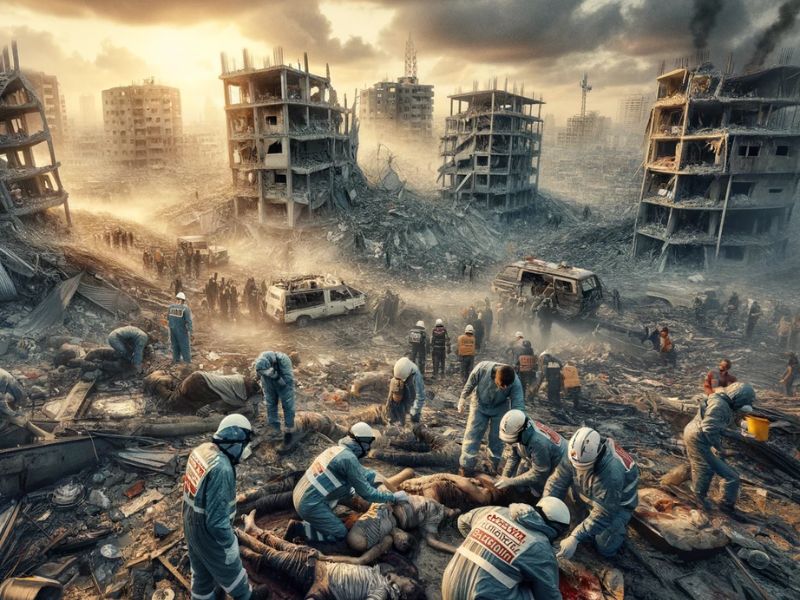
Humanitarian Crisis in Gaza: The Challenging Work of Medical Personnel Under Siege
Ambulance and Emergency Room Staff Struggle to Save Lives in Extreme Conditions
A Context of Escalating Crisis
The humanitarian crisis in the Gaza Strip has plummeted following the intensification of the conflict between Israel and Hamas. With the Israeli siege on Khan Younis, medical facilities, already overwhelmed, now find themselves in even more desperate conditions. Hospitals like Kamal Adwan Hospital have been surrounded and have become shelters for thousands of fleeing people. Medical personnel, facing a lack of resources and medical equipment, struggle to treat the increasing number of injured and sick.
The Struggle of Ambulance and Emergency Room Operators
Ambulance and emergency room operators are on the front lines of this crisis. They must navigate through destroyed streets and bombed buildings to reach the injured, often risking their own lives. The lack of fuel and access to affected areas has made their work even more challenging. Additionally, ongoing aerial and ground attacks continue to make every movement dangerous, with the constant fear of new bombardments.
Refugees and the Risk of Epidemics
The number of displaced people in Gaza is rapidly increasing. More than one million Palestinians have been forced to leave their homes in the north of Gaza and are now seeking refuge in the south, especially in Rafah. This massive movement of people has created precarious hygienic and sanitary conditions, increasing the risk of epidemics. The lack of basic services such as potable water and adequate sanitation facilities has worsened the situation, leading to an increase in infectious diseases such as respiratory infections, scabies, and diarrhea.
International Response and Humanitarian Aid
Despite international calls for a ceasefire and the opening of humanitarian corridors, the situation in Gaza remains critical. Humanitarian organizations like WHO and UNRWA are doing their best to provide assistance but face enormous challenges. The entry of aid is limited and insufficient to meet the growing needs. Humanitarian workers themselves are often blocked by the fighting, making it difficult to deliver essential aid such as food, water, and medical supplies.
Possible Future Scenarios
In this scenario, the medical staff of Gaza continues to show incredible resilience and dedication, despite extreme conditions. However, without a lasting ceasefire and more effective international support, the health and humanitarian crisis in Gaza could quickly turn into a catastrophe. It is crucial that the international community actively intervenes to facilitate access to aid and support front-line healthcare workers in this unprecedented crisis.


